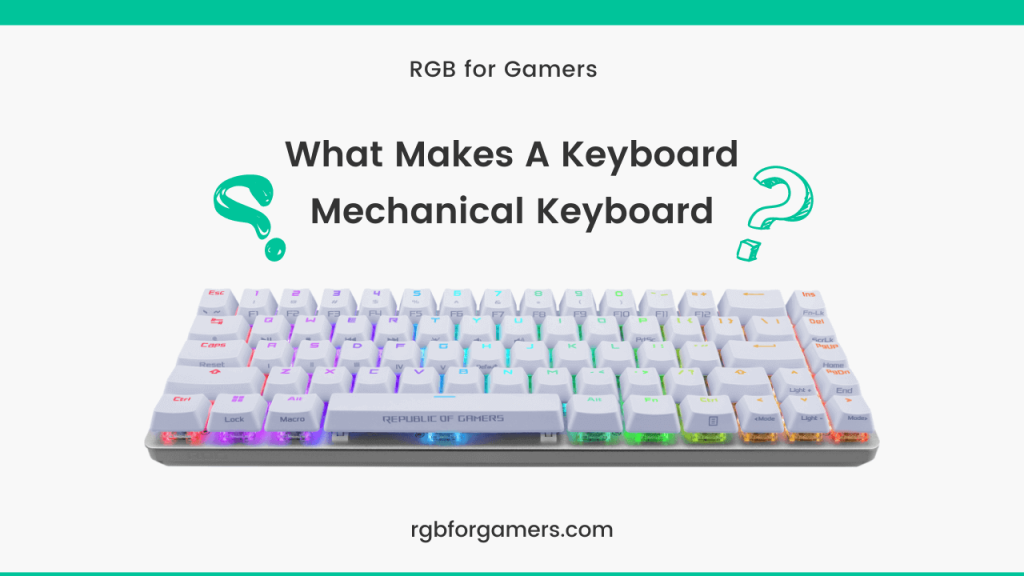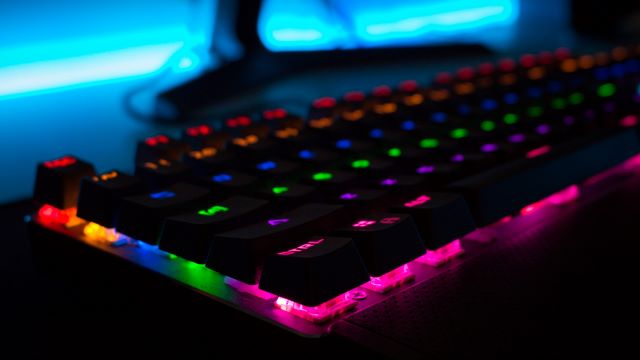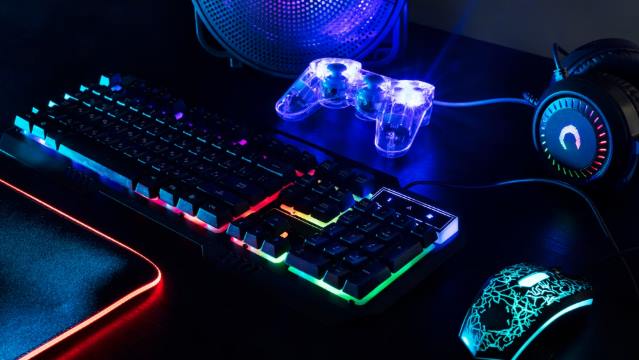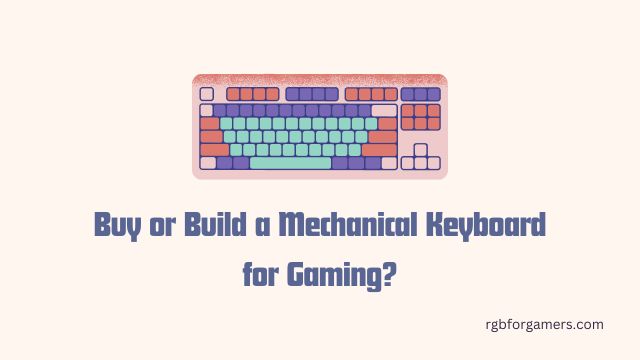Mechanical keyboards are common nowadays. But do you know what makes a keyboard mechanical? In this blog post, we will look at this topic. After reading this you will understand the difference between regular and mechanical keyboards.
Table of Contents
The Anatomy of a Mechanical Keyboard
At the heart of a mechanical keyboard lies its defining feature: the mechanical switches. These switches replace the simple rubber domes of conventional keyboards with intricate mechanisms that offer a tactile and satisfying typing experience.
Each mechanical switch consists of several components working in harmony:
- Housing: The housing encases the various components of the switch, providing stability and support.
- Spring: A spring sits beneath the keycap and serves as the primary mechanism for registering a keypress. When pressed, the spring compresses and then rebounds, transmitting the keypress to the system.
- Actuator: The actuator is usually a stem attached to the keycap. When the key is pressed, the actuator moves down, pushing against the spring.

The Magic of Tactile Feedback and Audible Clicks
One of the most beloved features of mechanical keyboards is the tactile feedback they provide. As the key is pressed, users feel a distinct bump – a tactile sensation – indicating that the keypress has been registered. This tactile feedback not only enhances typing accuracy but also adds a satisfying dimension to the typing experience.
For those who seek an extra sensory dimension, some mechanical switches offer an audible click. This feature produces a distinct sound at the point of actuation, creating an auditory confirmation of every keypress. Clicky switches have become synonymous with mechanical keyboards and are favored by many enthusiasts.
Do you know Why Redragon Keyboards Are So Affordable? Read this to know about this.
Customization: Your Typing Experience, Your Way
Unlike conventional keyboards with a one-size-fits-all approach, mechanical keyboards offer a plethora of switch options. These switches come in various flavors, each catering to different preferences:
- Tactile vs. Linear: Tactile switches provide the aforementioned bump upon actuation, while linear switches have a smooth and consistent keystroke without tactile feedback.
- Actuation Force: Different switches require varying amounts of force to register a keypress, allowing users to choose a switch that matches their desired typing experience.
- Noise Level: From silent switches designed for quiet environments to clicky switches that make a satisfying click sound, users can select switches based on their noise preferences.

Durability and Performance
Mechanical keyboards are renowned for their durability. The individual switch design means that each keypress has its own mechanism, reducing the risk of key failure due to wear and tear. Mechanical switches are built to withstand millions of keystrokes, making them a reliable choice for heavy typists, gamers, and professionals.
Here are some of our mechanical keyboard reviews:
Differences between a mechanical and a regular keyboard
The main difference between a keyboard and a mechanical keyboard is the way they register key presses. A regular keyboard uses a membrane switch, which is a thin layer of rubber with a conductive circuit underneath. When you press a key, the membrane collapses and completes the circuit, registering the key press.
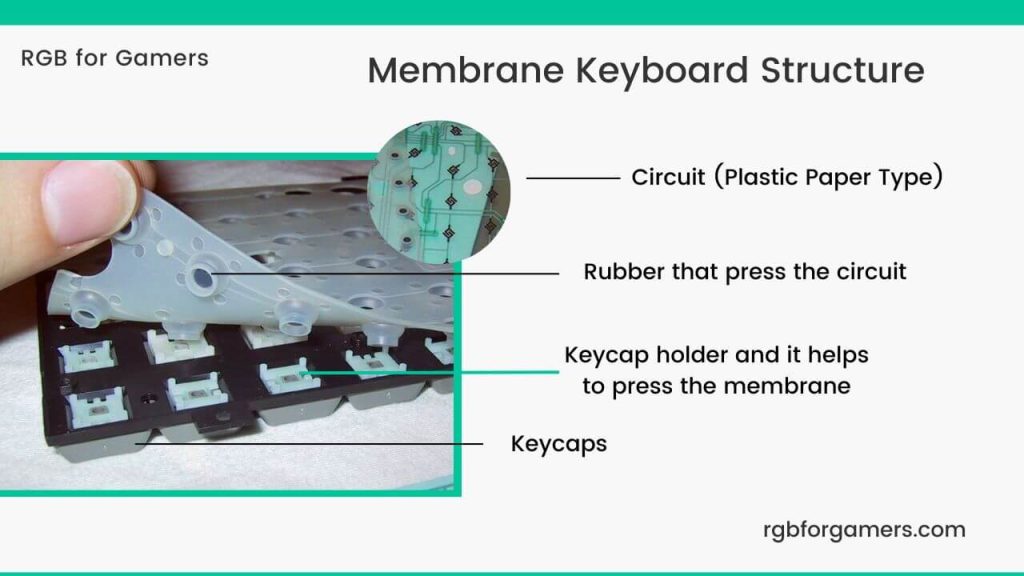
A mechanical keyboard uses individual mechanical switches, each with its own spring and actuator. When you press a key, the actuator moves down and activates the switch, registering the key press.
Mechanical keyboards offer a number of advantages over keyboards, including:
- Better tactile feedback: Mechanical switches provide different levels of tactile feedback, which can make typing more enjoyable and accurate.
- More durability: Mechanical switches are typically more durable than membrane switches, making them a better choice for heavy typists and gamers.
- More customization: Mechanical keyboards offer a wider range of customization options, such as different switch types, keycaps, and layouts.
However, mechanical keyboards also have some disadvantages, including:
- Higher price: Mechanical keyboards are typically more expensive than keyboards.
- Loudness: Mechanical switches can be louder than membrane switches, which may be a problem for some users.
- Size and weight: Mechanical keyboards can be larger and heavier than keyboards, which may be a problem for users who travel frequently.
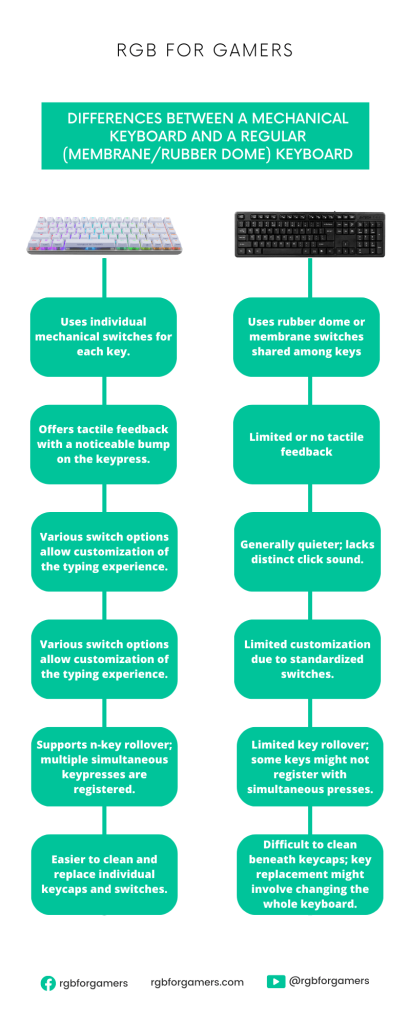
Differences between a mechanical keyboard and a regular (membrane/rubber dome) keyboard:
| Aspect | Mechanical Keyboard | Regular Keyboard (Membrane/Rubber Dome) |
|---|---|---|
| Key Switches | Uses individual mechanical switches for each key. | Uses rubber dome or membrane switches shared among keys. |
| Tactile Feedback | Offers tactile feedback with a noticeable bump on the keypress. | Limited or no tactile feedback. |
| Audible Click | Various switch options allow customization of the typing experience. | Generally quieter; lacks distinct click sound. |
| Customization | Various switch options allow customization of typing experience. | Limited customization due to standardized switches. |
| Key Rollover | Supports n-key rollover; multiple simultaneous keypresses are registered. | Limited key rollover; some keys might not register with simultaneous presses. |
| Durability | More durable due to individual switches and robust design. | Less durable as rubber domes can wear out over time. |
| Typing Feel | Offers a unique and satisfying typing feel based on chosen switches. | The typing feel is generally consistent across keys. |
| Keystroke Life | Higher keystroke lifespan, often millions of keystrokes per switch. | Lower keystroke lifespan compared to mechanical switches. |
| Performance | Preferred by gamers, typists, and professionals due to tactile feedback and responsiveness. | Suited for general use but may not provide the same precision as mechanical switches. |
| Maintenance | Easier to clean and replace individual keycaps and switches. | Difficult to clean beneath keycaps; key replacement might involve changing the whole keyboard. |
| Price Range | Tends to be more expensive due to complex design and customization options. | Generally more affordable and widely available. |
| Typing Experience | Offers a more engaging, personalized, and precise typing experience. | Provides a standard typing experience without much variation. |
Conclusion
In the world of keyboards, mechanical switches stand as a testament to the marriage of technology and user experience. The tactile feedback, audible clicks, and customizable options elevate the act of typing to an art form.
Whether you’re a programmer, a writer, a gamer, or simply someone who enjoys the satisfaction of a well-engineered keyboard, the world of mechanical keyboards has something to offer. So, the next time your fingers dance across the keys of a mechanical keyboard, remember the intricate mechanisms that make that typing experience a truly exceptional one.

Hello I am Sakib Mahmud. A gamer and writer, and a Student of Computer Science and Engineering. I love to write about different topics and gaming is one of my favorites. Hope you will find something awesome!
